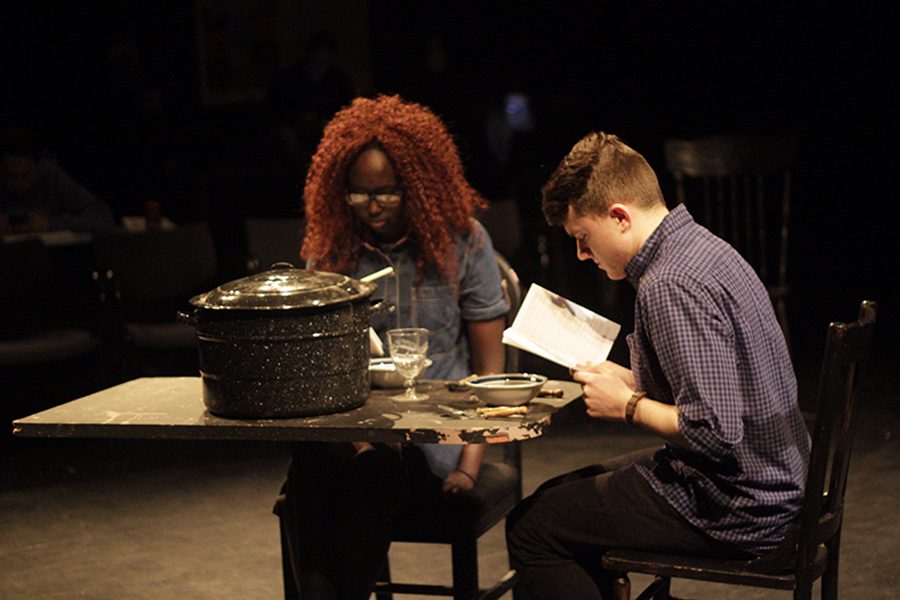‘The Crucible’ takes audience to past
Jacob Johnson and Akuec Yel running lines at an afterschool rehearsal for The Crucible
March 21, 2017
Theater-goers took a trip back to the sometimes uncomfortable 1950s with the production of “The Crucible” March 2-4.
The production of “The Crucible” was held in the Black Box Theater and featured a circular seating arrangement and a stage that resembled that of a yin-yang symbol, to represent the evil and good shown by the characters throughout the play.
Overall the cast felt that the show met all of their expectations and more, like Chase Simmons, junior.
Simmons, who played protagonist John Proctor, said that he “definitely felt like [the show] was a success; [the cast] pulled together nicely.”
This couldn’t have been done without lots of hard work and practice.
Akuech Yel, senior, who played John Proctor’s wife, Elizabeth, spent a lot of time making the performance the best it could be by rehearsing and getting into character.
“I feel like I haven’t left the school all week,” Yel said. “I was always rehearsing lines.”
As with every show, each role requires a different personality to take the form of the character, this is often expressed in the dialogue.
“I had to memorize 325 lines,” Simons said. “Jacob Johnston played Reverend Hale. He had to memorize more than 400 lines.”
The show is set during the witch trials in 1690s Salem, Mass., showing how superstition and lies can lead to drastic consequences.
Although the show was meant to take place in the 1690s, the cast and crew worked to make the scenery and costumes feel more of the time of the 1950s.
The reasoning for this is that when “The Crucible” was written by Arthur Miller, it was to denounce the 1950s communist red scare.
The cast really enjoyed the play. Simons and Yel both favored one scene in particular as their favorites.
“The last scene was my favorite by far,” Simons said.
Yel agreed saying, “after a while I began liking the last scene, but before that [my favorite] was the argument between Elizabeth and John.”
The play was done very close to the orginal script, following near if not exact dialogue, making the play more real to its roots.

